I have all the local orders going out tomorrow after lockdown and all the the US orders later this week. I'm about to order more microMats as well but I will send what I can this week.
I had a few external and internal holdups but I have most of the parts for a few hundred units, so it's a matter of getting them all assembled which needs some uninterrupted workdays. Once the boards are solder pasted they need to be worked through to the end. But I have some help that's available now so this next week will be very very busy assembling and testing boards. The larger footprints I have on this revision help with the mounting of the QFN packs (UB3 and dual 2A switching regulator).
In the testing department I load TAQOZ onto the board and the I/O scan not only measures pull-up/down/float but also capacitance so I have a good idea if an I/O pin is shorted to another or not connected etc. The TAQOZ SD boot reads a config file and displays a splash screen and plays a startup sound so that's a good system check too that displays test results on the screen. There were ongoing gremlins with the RTC corrupting during boot when there is a flurry of activity of the I2C bus with scanning for devices and reporting information etc but this seems to be solved by using the password protection feature of the RTC. So the tiny cap works well for keeping the time for a several days completely powered off but only needs a few seconds to be fully charged. There is an option on the reverse of the board for a much larger cap (about the size of a ladies watch battery) with about 11 times the capacity. A lithium battery with an identical footprint is available if you intend to leave this powered off for months at a time and still want the time intact. Me, if it's out of service for that long I would be setting the time again anyway.
The UB3 reset and watchdog functions work really well too but there are still some issues which are exacerbated by intense I2C scan activity and serial port usage which occurs at TAQOZ boot that still need to be thoroughly debugged, although they don't seem to be a problem normally. The automatic serial load mode is very useful as neither Flash nor SD need to be disabled when loading new software over the serial link.
If that can be interrupted by a downloads or a reset button or pin, and the P2 uses very little power while in reset, then that is sufficient. Do we have any power numbers on the P2 now that the final rev is released?
BTW, I was looking through the pictures in the Tachyon download, and saw the P2 Forth PC screen and now really want one. Let us know when we can order.
Hey Peter! Glad you're getting "close to the end" with your design! I haven't stayed very close to your project but I have checked in from time to time. I'm mostly concentrating on an Arduino Robotics program right now but would like to include the P2 as a future upgrade for advanced students. You've got so much time into your design that you deserve the rewards from your effort. I'd like to order a couple of your P2D2's. Let me know where/how to send some money. If I can incorporate it as an "Add on" board in my robotics program, I will. I recently had a company interested in my P2 Indy motion control board ( that I have been working on for... well... forever. ) I started to "get back into" the design, but I realized that the design is essentially done. (Except for all the hundreds of tweeks and adjustments that come once you think a design might "Finally be done" ) This is a 4 layer board 5x7 inches on a side with burred and blind vias. It's not going to be "Cheap" to build if it ever is going to happen and frankly, I want to concentrate on my robotics program rather than have my time diluted by something that isn't directly in my field of interest anymore. This design will be a "Killer" motion controller. I priced out manufacturing and even in 50 piece quantities, the "Bare board" price is still around $20.00. I have the code for a first-level CNC functioning. My plan was to add DC motor drives as the next phase, then go on to add-on high power brushless drives, but like I said, my heart just isn't in it anymore. I hate the idea of just "Walking Away" from something that I have years of my life invested into. Do you have any desire to run with another, more complex design or know someone who might be interested? If not, no harm, no foul. but like I said, it's hard to just walk away from such an incredible time investment over the years. Let me know if you have any interest, if not, I still want to use your P2D2 . Let me know how to make it happen. Ken B.
I know, I don't like computers and they don't like me. But anyway: the P2D2 is not recognized by my PC, neither W7 nor W10. The device "EFM8UB3 P2D2v4 USB Bridge UB3_2.5.7G" obviously needs a driver and P2D2 is not really known by Windows. What is the simple trick to proceed? Thanks, Rainer
That is strange as the UB3 needs just the CP2102 serial bridge driver which is readily available in windows and linux since very long time. Years, in fact.
Have you waited long enough until windows installs the driver automatically ?
You shouldn't do nothing extra, really. It just works. At least it does for me with no issues both in Win7 and 10.
However, I must say, I use windows only occasionally .
@ErNa said:
I know, I don't like computers and they don't like me. But anyway: the P2D2 is not recognized by my PC, neither W7 nor W10. The device "EFM8UB3 P2D2v4 USB Bridge UB3_2.5.7G" obviously needs a driver and P2D2 is not really known by Windows. What is the simple trick to proceed? Thanks, Rainer
When I get delivery of the North America delivery products I will check with Win7 and Win10. Should work with CP2102 driver.
update: OK, readme told me, it's W10 only, have to install a legacy driver. Surprisingly the installer didn't tell me that...
Just an update: I located a driver here: https://silabs.com/developers/usb-to-uart-bridge-vcp-drivers and run the installation. Now the P2D2 comes up as "Silicon Labs CP210x USB to UART Bridge". I expected something like COMx . Did I load the wrong driver? And, as I said, the computer doesn't like me. Installation took minutes after minutes and ended with status: failed. Then when I tried to reinstall he told me: everything is fine, you are up to date ;-) Sounds like carneval!
What program I should use as a terminal and will it find this connection, the bridge ?
If you enter "Device Manager" in the W10 Search box, it will get you to DM.
Click on Com Ports and you will see your CP210x and the assigned COM port number.
@ErNa said:
What program I should use as a terminal and will it find this connection, the bridge ?
On windows Teraterm is one of the best options. When on windows, I use that. If your CP2102 driver installed correctly the Teraterm will let you choose the serial connection and the COM port settings. The most recent TAQOZ uses 921600 baud rate by default, 8 data bits, no parity, 1 stop bit.
OK, I'm still on W7 . Could install the driver, Teraterm hangs the moment I open COM7. After I installed the W10 driver errorneously, I still could install the enumerating driver and got COM7, Windows says, everything is ok, but Teraterm is reluctant.!
I'll give another try the other day on a W10 machine
If you send me your P2D2, I can test it on your behalf! Jokes apart, what's that unrecognized device? Did you try to start TeraTerm as an administrator? Did you manage to uninstall the W10 driver?
@ErNa I guess I'd try the Prop Tool or FlexProp GUI to try to make a connection. Maybe Parallax Serial Terminal? Maybe "access denied" means something else has that port open already?
@ErNa said:
I know, I don't like computers and they don't like me. But anyway: the P2D2 is not recognized by my PC, neither W7 nor W10. The device "EFM8UB3 P2D2v4 USB Bridge UB3_2.5.7G" obviously needs a driver and P2D2 is not really known by Windows. What is the simple trick to proceed? Thanks, Rainer
mmm just connected the P2D2 to my work computer (win10 based). P2D2 gets recognized as COM3 (no drivers installed by me as I don't have the correct permissions to do so)
but I can not open the serial port, neither with Putty nor flexprop/loadp2.
As comparison it is working on my linux machines
Edit:
and EVAL rev B board is working on win10 (again without installing drivers)
Comments
@Peter Jakacki / @ErNa
Any news about the P2D2 for Europe (Italy)
Waiting for the second batch, now that you ask I realize I'm waiting ;-)
@ErNa, pls remember me...
When do you anticipate USA shipment?
I ordered a lot ;-) and hopefully Peter will find a way to start mass production....
North America is still waiting on delivery.
I had a few external and internal holdups but I have most of the parts for a few hundred units, so it's a matter of getting them all assembled which needs some uninterrupted workdays. Once the boards are solder pasted they need to be worked through to the end. But I have some help that's available now so this next week will be very very busy assembling and testing boards. The larger footprints I have on this revision help with the mounting of the QFN packs (UB3 and dual 2A switching regulator).
In the testing department I load TAQOZ onto the board and the I/O scan not only measures pull-up/down/float but also capacitance so I have a good idea if an I/O pin is shorted to another or not connected etc. The TAQOZ SD boot reads a config file and displays a splash screen and plays a startup sound so that's a good system check too that displays test results on the screen. There were ongoing gremlins with the RTC corrupting during boot when there is a flurry of activity of the I2C bus with scanning for devices and reporting information etc but this seems to be solved by using the password protection feature of the RTC. So the tiny cap works well for keeping the time for a several days completely powered off but only needs a few seconds to be fully charged. There is an option on the reverse of the board for a much larger cap (about the size of a ladies watch battery) with about 11 times the capacity. A lithium battery with an identical footprint is available if you intend to leave this powered off for months at a time and still want the time intact. Me, if it's out of service for that long I would be setting the time again anyway.
The UB3 reset and watchdog functions work really well too but there are still some issues which are exacerbated by intense I2C scan activity and serial port usage which occurs at TAQOZ boot that still need to be thoroughly debugged, although they don't seem to be a problem normally. The automatic serial load mode is very useful as neither Flash nor SD need to be disabled when loading new software over the serial link.
Can UB3 power up the P2 at a certain time?
No, but it can hold the P2 in reset for a certain time and possibly could even read the RTC for an actual time of day wake-up.
If that can be interrupted by a downloads or a reset button or pin, and the P2 uses very little power while in reset, then that is sufficient. Do we have any power numbers on the P2 now that the final rev is released?
BTW, I was looking through the pictures in the Tachyon download, and saw the P2 Forth PC screen and now really want one. Let us know when we can order.
I know, I don't like computers and they don't like me. But anyway: the P2D2 is not recognized by my PC, neither W7 nor W10. The device "EFM8UB3 P2D2v4 USB Bridge UB3_2.5.7G" obviously needs a driver and P2D2 is not really known by Windows. What is the simple trick to proceed? Thanks, Rainer
That is strange as the UB3 needs just the CP2102 serial bridge driver which is readily available in windows and linux since very long time. Years, in fact.
Have you waited long enough until windows installs the driver automatically ?
You shouldn't do nothing extra, really. It just works. At least it does for me with no issues both in Win7 and 10.
However, I must say, I use windows only occasionally .
When I get delivery of the North America delivery products I will check with Win7 and Win10. Should work with CP2102 driver.
update: OK, readme told me, it's W10 only, have to install a legacy driver. Surprisingly the installer didn't tell me that...
Just an update: I located a driver here: https://silabs.com/developers/usb-to-uart-bridge-vcp-drivers and run the installation. Now the P2D2 comes up as "Silicon Labs CP210x USB to UART Bridge". I expected something like COMx . Did I load the wrong driver? And, as I said, the computer doesn't like me. Installation took minutes after minutes and ended with status: failed. Then when I tried to reinstall he told me: everything is fine, you are up to date ;-) Sounds like carneval!
What program I should use as a terminal and will it find this connection, the bridge ?
Re: COMx
If you enter "Device Manager" in the W10 Search box, it will get you to DM.
Click on Com Ports and you will see your CP210x and the assigned COM port number.
On windows Teraterm is one of the best options. When on windows, I use that. If your CP2102 driver installed correctly the Teraterm will let you choose the serial connection and the COM port settings. The most recent TAQOZ uses 921600 baud rate by default, 8 data bits, no parity, 1 stop bit.
OK, I'm still on W7 . Could install the driver, Teraterm hangs the moment I open COM7. After I installed the W10 driver errorneously, I still could install the enumerating driver and got COM7, Windows says, everything is ok, but Teraterm is reluctant.!
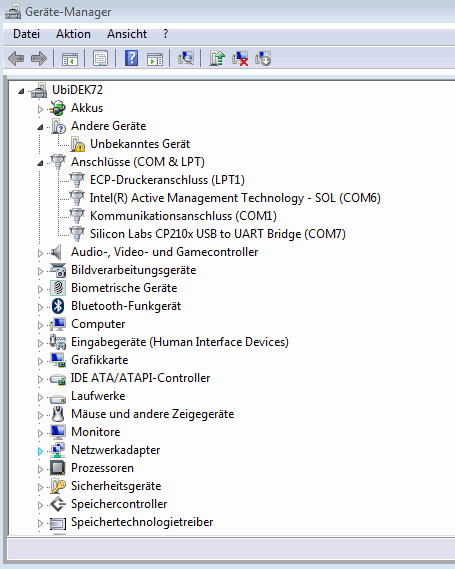
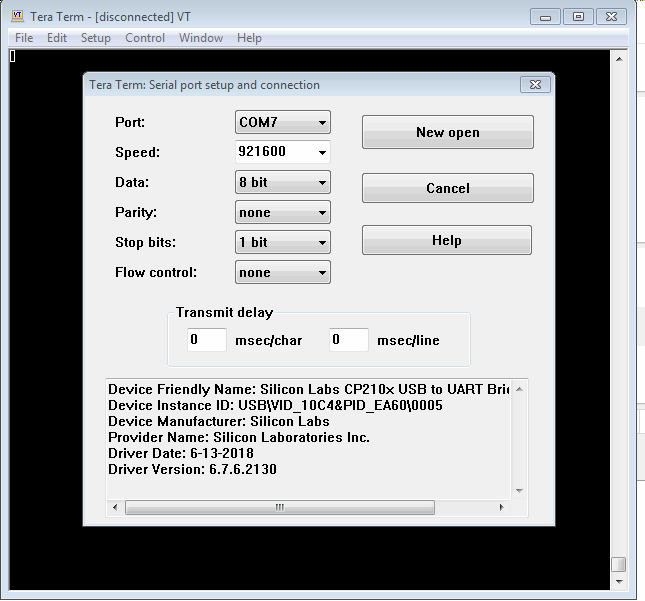
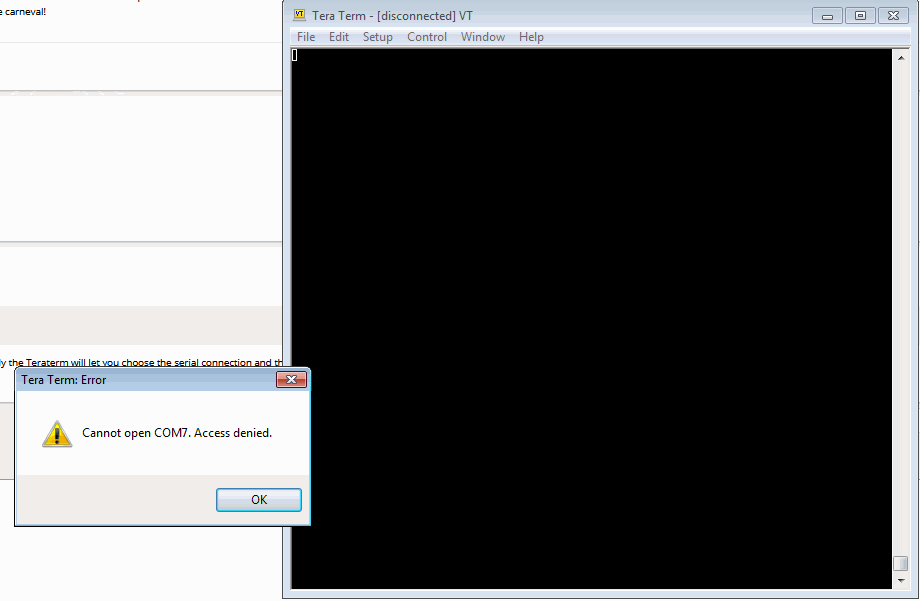
I'll give another try the other day on a W10 machine
If you send me your P2D2, I can test it on your behalf! Jokes apart, what's that unrecognized device? Did you try to start TeraTerm as an administrator? Did you manage to uninstall the W10 driver?
@ErNa I guess I'd try the Prop Tool or FlexProp GUI to try to make a connection. Maybe Parallax Serial Terminal? Maybe "access denied" means something else has that port open already?
Try to delete "unbekanntes Gerät" and restart your system.
mmm just connected the P2D2 to my work computer (win10 based). P2D2 gets recognized as COM3 (no drivers installed by me as I don't have the correct permissions to do so)

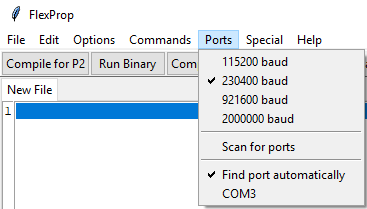
but I can not open the serial port, neither with Putty nor flexprop/loadp2.
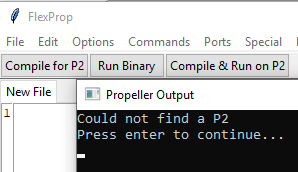
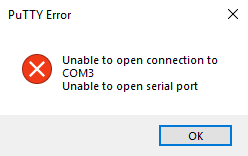
As comparison it is working on my linux machines
Edit:

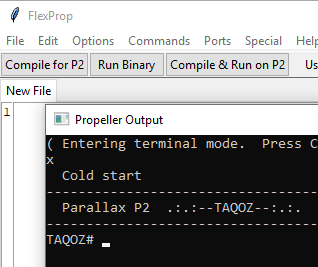
and EVAL rev B board is working on win10 (again without installing drivers)